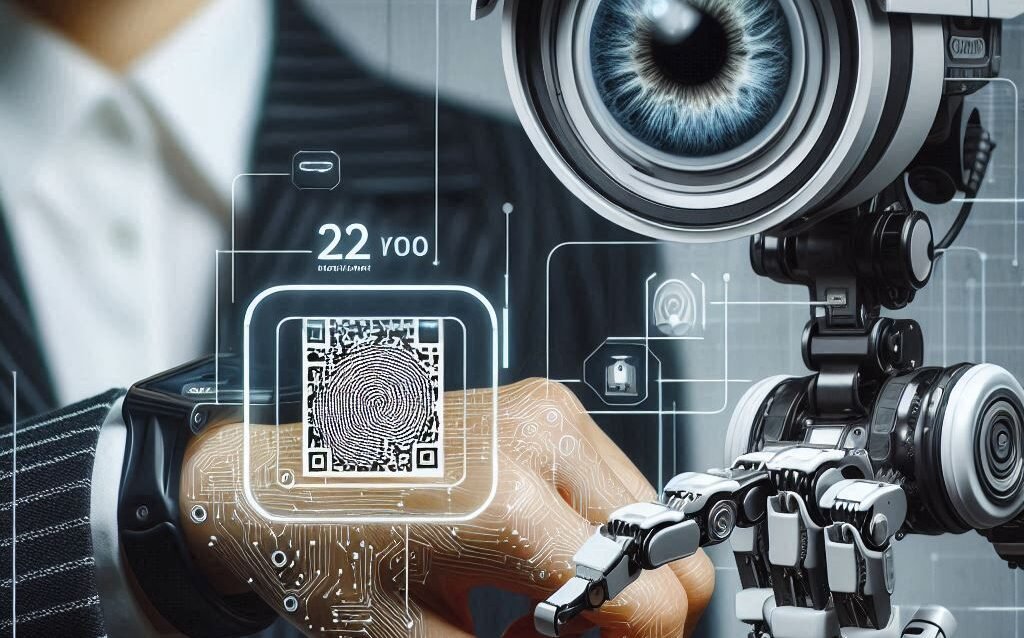Understanding Facial Recognition Technology
Facial recognition technology is a sophisticated biometric system that identifies individuals by analyzing their facial features. This technology relies on image processing algorithms that detect and quantify distinguishing characteristics of a face, converting it into a mathematical representation known as a faceprint. These faceprints serve as a digital template that can be compared against databases containing images of known individuals.
The process begins when a camera captures an image or video of a person. The facial recognition software then isolates the face from the background, using techniques such as landmark detection, where critical points on the face (like the eyes, nose, and mouth) are mapped. This step is crucial as it ensures that the system focuses solely on the facial attributes, disregarding other elements in the frame. Following this, the software applies algorithms to measure the distances and angles between the identified points, creating a unique identifier that reflects the face’s geometry.
Facial recognition technology is widely implemented in security settings, from public safety surveillance to access control systems. In large urban environments, for instance, security cameras equipped with facial recognition capabilities can monitor crowds, quickly identifying individuals who may pose a risk. Although the technology demonstrates remarkable efficiency in various scenarios, it does have limitations. Factors such as lighting conditions, camera angles, and occlusions (where the face is partially covered) can hinder accurate identification. This makes it essential to understand the nuanced capabilities and limitations of facial recognition technology, particularly in contexts where direct visibility of facial features is compromised.
(Purchase today by clicking on the image)
Alternate Identification Methods Used by Security Cameras
Security cameras have evolved significantly, employing various sophisticated technologies to identify individuals beyond traditional facial recognition. One prominent method is gait analysis, which examines the unique way an individual walks. This technique relies on the observation of body posture, stride length, and movement patterns to create a distinctive walking profile. Even in instances where a person’s face is obscured, gait analysis can effectively serve as a tool for identification in surveillance systems.
Another essential method employed in modern security surveillance is pattern recognition. This involves the use of algorithms that analyze specific behavioral patterns or physical attributes that can be tracked over time. For instance, it may include the identification of individuals based on their clothing, backpacks, or the type of accessories they carry. By focusing on these attributes, security cameras can match patterns against databases of previous sightings, providing a means for identification even when facial features are not visible.
Additionally, behavioral analytics is gaining traction as a reliable identification method. This approach uses artificial intelligence to assess and interpret human actions within video footage. By understanding expected behavior in various settings, the technology can flag anomalies that deviate from the norm. Such anomalies might include loitering, running, or any unusual movement that raises suspicion. This capability is particularly useful in public spaces, where the dynamics of crowds can obscure individual identities. Through these advanced methods, security cameras can enhance public safety and security by identifying persons of interest efficiently without relying solely on facial recognition.
Challenges in Non-Facial Identification
The potential for security cameras to identify individuals without relying on facial recognition techniques presents a number of significant challenges. One of the primary concerns is accuracy; non-facial identification methods can struggle to provide reliable results when identifying individuals based solely on features such as gait, clothing, or other unique physical traits. These methods lack the precision that facial recognition offers, resulting in a higher probability of false identifications, which can have serious implications in law enforcement and public safety contexts.
Furthermore, environmental factors play a crucial role in the efficacy of non-facial identification. Poor lighting conditions, varying background patterns, and the distance from which individuals are captured can all hinder the ability of security cameras to discern distinguishing features. For example, a person wearing a hooded jacket in a dimly lit area may present an additional layer of complexity in identification efforts. Camera placements also affect the quality of data captured; angles that do not clearly show an individual’s attributes can lead to ambiguous readings.
Another significant challenge arises from the variety of clothing styles and accessories that individuals may wear. The use of masks, hats, or glasses can obscure critical identifiers, rendering non-facial recognition less effective. Additionally, evolving fashion trends and cultural differences can introduce inconsistencies that hinder the identification processes. The reliance on these alternative approaches necessitates a nuanced understanding of individual and situational variables that can complicate identification efforts.
Ethically, the usage of non-facial identification poses questions regarding privacy and consent. While technology advances, it is essential to consider how its implementation impacts individual freedoms and community dynamics. With this complex landscape of challenges, the feasibility of non-facial identification remains a topic of ongoing discussion and research. In conclusion, the limitations of current technology combined with ethical considerations highlight a critical need for further exploration in this domain.
The Future of Surveillance and Identification Technologies
The landscape of surveillance and identification technologies is rapidly evolving, particularly with the advancements in artificial intelligence (AI) and machine learning (ML). These technologies promise to enhance the capabilities of security systems beyond conventional facial recognition methods. One potential avenue of development is in non-facial recognition techniques, which can identify individuals based on unique patterns, behaviors, or even gait analysis. Such methods offer an innovative perspective on personal identification, making it possible to assess the identity of a person without the need for clear facial visibility.
As the integration of AI in surveillance systems becomes more sophisticated, machine learning algorithms will refine their ability to discern and analyze complex data patterns. For instance, behavioral recognition technology could track and analyze an individual’s movements through a monitored area, establishing behavioral profiles that may serve as identifiers. This revolution in technology could prove essential, especially in crowded environments where facial identification is challenging, thereby improving overall security measures.
However, such advancements also bring forth crucial discussions about privacy implications. As surveillance systems learn more about individuals through non-facial recognition, the line between safety and intrusion blurs. The potential for misuse of gathering personal identification data raises significant ethical concerns. These discussions are imperative as society navigates the balance between security and individual privacy rights. It is essential to address potential regulations that could govern the collection and use of identification data to prevent abuse and ensure transparency.
In summary, the future of surveillance and identification technologies is poised for transformation through innovative AI and ML applications. While these advancements enhance security measures, it remains vital to pragmatically address ethics, regulations, and privacy considerations to safeguard individual rights. The synergy of advanced technology and responsible implementation will ultimately define the future trajectory of surveillance systems.





